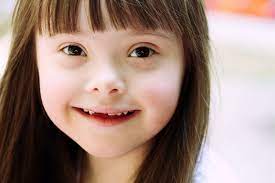
World Down Syndrome Day: Risk factors for Down syndrome...

A person with Down syndrome is genetically predisposed to having an extra copy of chromosome 21 at birth. This indicates that, as opposed to 46, they have 47 chromosomes in total. Their physical and brain development may be impacted by this. With supportive care, people with Down syndrome lead happy, healthy lives.
Who is affected by Down syndrome?
Anyone can be impacted by Down syndrome. It is a hereditary disorder that does not develop as a result of prenatal or parenthood activities. Most cases of Down syndrome are sporadic and occur at random. When the egg and sperm unite during conception, people often do not inherit Down syndrome in an autosomal dominant or recessive form.
Which factors put someone at risk for Down syndrome?
To find out more about the risk factors for Down syndrome, research is still being done. Research indicates that the likelihood of having a kid with Down syndrome rises with the age of the parent giving birth. parents who are 35 years of age or older who were assigned female at birth (AFAB) have an increased chance of having a kid diagnosed with Down syndrome or another genetic disorder. The majority of Down syndrome babies are born to adults under 35 since they have higher fertility rates than those who are 35 and older.
How is a diagnosis of Down syndrome made after birth?
During a physical exam after your baby is born, medical professionals search for any physical indications of Down syndrome. The doctor treating your child might run a blood test known as a karyotype test to confirm the diagnosis. The doctor performing this test on your child will take a tiny sample of blood to examine under a microscope. To identify the disease, they will search for an additional copy of the 21st chromosome.




 click and follow Indiaherald WhatsApp channel
click and follow Indiaherald WhatsApp channel